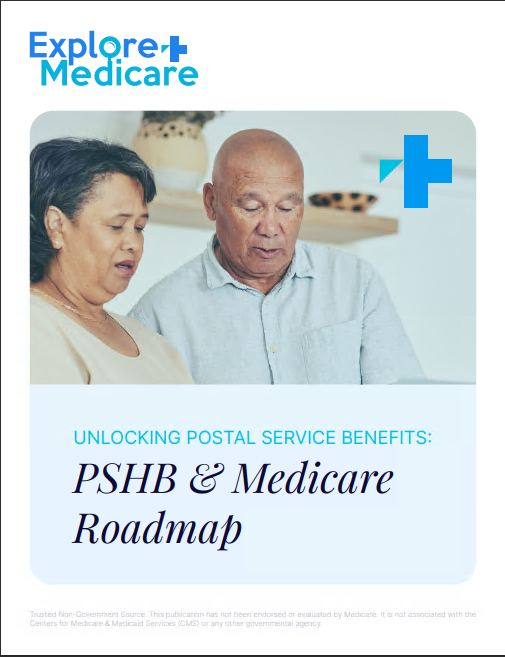Key Takeaways
-
Medicare costs vary depending on the type of coverage you choose, including premiums, deductibles, and copayments that can impact your out-of-pocket expenses.
-
Understanding how costs apply across different Medicare parts can help you plan ahead and avoid unexpected healthcare expenses.
How Much Will You Pay for Medicare? Let’s Talk Numbers
If you’re enrolling in Medicare, you’re probably wondering, “How much is this going to cost me?” The answer isn’t always straightforward. Medicare has different parts, each with its own premiums, deductibles, and copays, and costs can change annually. To make things easier, let’s break this down into four conversations you need to have when budgeting for Medicare.
What You’ll Pay in Medicare Premiums
Medicare premiums are the monthly fees you pay to keep your coverage active. The amount varies based on the part of Medicare you have and, in some cases, your income. These costs may also increase slightly each year, so staying informed is key.
Medicare Part A Premiums
Most people don’t pay a premium for Medicare Part A (Hospital Insurance) if they worked and paid Medicare taxes for at least 40 quarters (10 years). However, if you don’t meet that requirement, you’ll have to pay a monthly premium, which can be quite expensive. If you’ve worked between 30 and 39 quarters, you may qualify for a reduced premium.
Medicare Part B Premiums
Medicare Part B (Medical Insurance) requires a monthly premium for everyone enrolled. Your income determines how much you pay, with higher earners facing an Income-Related Monthly Adjustment Amount (IRMAA). These rates can change each year, so staying updated on the latest costs is essential. Keep in mind that failing to enroll in Part B when you’re first eligible could result in a permanent late enrollment penalty.
Medicare Part D Premiums
Part D covers prescription drugs, and its premium depends on the plan you choose. Like Part B, higher-income beneficiaries pay an additional IRMAA surcharge. Each year, Part D premiums may change, so reviewing your plan during Medicare’s Open Enrollment Period (October 15 – December 7) can help you find the best option for your medication needs.
How Deductibles Affect Your Medicare Costs
Deductibles are the amounts you must pay out of pocket before Medicare starts covering costs. These amounts reset each year and vary by Medicare part. Planning for these expenses is crucial to managing healthcare costs.
Medicare Part A Deductible
Medicare Part A has a deductible per benefit period, not per year. This means if you’re hospitalized multiple times in one year and your stays are separated by more than 60 days, you could owe the deductible more than once. This can be an important factor when considering potential hospitalization costs. Additionally, if you require skilled nursing facility care, Medicare may cover part of the costs, but only for a limited number of days.
Medicare Part B Deductible
Unlike Part A, the Part B deductible is an annual charge. Once you pay it, Medicare typically covers 80% of approved services, and you’re responsible for the remaining 20%. Keep in mind that some services, such as preventive care, may be covered without applying the deductible.
Medicare Part D Deductible
Most Part D plans have an annual deductible, which you must meet before the plan starts covering prescription drug costs. Some plans exclude certain drug tiers from the deductible, meaning lower-cost medications may be covered immediately. Understanding which prescriptions fall under the deductible can help you plan for medication expenses.
Copayments and Coinsurance – The Ongoing Costs of Care
Once you’ve paid your deductible, Medicare typically shares costs with you through copayments and coinsurance. These ongoing costs can add up over time, depending on the medical services you need.
Medicare Part A Coinsurance
If you’re hospitalized for more than 60 days, you start paying daily coinsurance amounts. After 90 days, you enter the lifetime reserve period, where costs increase significantly per day. Skilled nursing facility care also has daily coinsurance after the first 20 days. For many enrollees, planning for potential hospital stays is crucial to avoiding unexpected medical expenses.
Medicare Part B Coinsurance
For most outpatient services, Medicare Part B covers 80%, and you pay 20%. There’s no cap on out-of-pocket spending, meaning medical costs can add up quickly if you need frequent care. This 20% coinsurance applies to doctor visits, outpatient surgeries, and durable medical equipment, among other services.
Medicare Part D Copayments and Coinsurance
Medicare Part D plans typically use copayments for lower-cost drugs and coinsurance for higher-tier medications. Costs can change throughout the year as you move through different coverage phases, such as the initial coverage phase and catastrophic coverage phase. The introduction of a $2,000 out-of-pocket cap in 2025 will significantly reduce the financial burden for beneficiaries who require high-cost medications.
How to Plan for Out-of-Pocket Maximums
Does Medicare Have an Out-of-Pocket Limit?
Original Medicare (Parts A and B) does not have an annual out-of-pocket cap. This means your healthcare costs could be unlimited in a worst-case scenario. However, if you’re enrolled in certain coverage options, you might have financial protections.
Medicare Advantage Out-of-Pocket Maximum
Medicare Advantage plans include an annual cap on out-of-pocket expenses for covered services. Once you reach this limit, the plan covers 100% of your costs for the rest of the year. If you frequently require medical care, understanding this limit can help protect you from excessive healthcare expenses.
Medicare Part D Out-of-Pocket Cap
In 2025, Medicare Part D introduces a $2,000 out-of-pocket spending cap. Once you reach this amount, your plan will cover all additional prescription drug costs for the year. This significant change will help those who rely on expensive medications better manage their prescription costs.
What This Means for Your Medicare Budget
When planning for Medicare costs, consider:
-
Your monthly premium obligations.
-
Potential deductibles you may need to pay before coverage kicks in.
-
Ongoing copayments and coinsurance amounts for medical services and prescriptions.
-
Whether you need coverage options that provide an out-of-pocket maximum.
Taking these factors into account helps you make informed choices and avoid unexpected financial burdens. Reviewing your coverage each year and budgeting for potential costs can help you stay financially prepared.
Need Help Navigating Your Medicare Costs?
If you have questions about your Medicare costs or need guidance on selecting the right coverage, get in touch with a licensed agent listed on this website. Speaking with an expert can help you understand your options and find a plan that meets your healthcare needs and budget.









